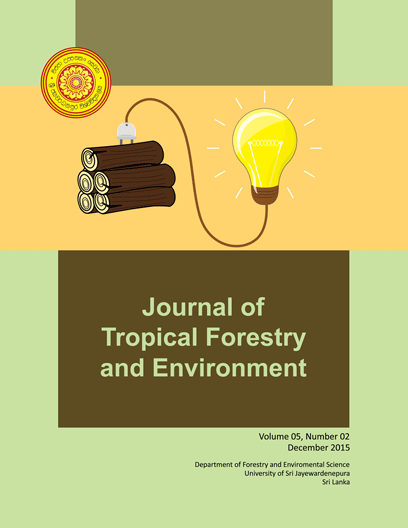Leaf Extracts of Lobelia nicotianaefolia as a Potential Biopesticide Against Defoliator Pests
DOI:
https://doi.org/10.31357/jtfe.v5i2.2663Abstract
The environmental concern and global demand for organically produced products provide an impetus to search for new, effective, safe and economical pesticidal formulations. Plants provide enormous scope for development into pesticides. Though more than 2000 plants are known to possess insecticidal properties, neem is the only established botanical pesticide. Hence in this study, we tested the insecticidal activities of the organic solvent extracts from the leaves of L. nicotianaefolia against the larval and egg stages of a serious defoliator pest, Hyblaea puera as the test insect. The organic solvent extracts of the leaf of L. nicotianaefolia were evaluated for their contact and feeding toxicity. The larvicidal action by contact toxicity on 3rd instar larvae of H. puera showed 100% mortality at 25% concentration. The ovicidal activity varied among the different extracts. All the treatments did not show any activity and were on par with control except ethyl acetate and water extracts and exhibited highest egg hatch inhibition (80%) and (64%) respectively at highest concentration (2%). The LC50 value for ethyl acetate extract and water extract was 0.55 and 1.014 respectively was not significant (P>0.05) for ovicidal action. The feeding toxicity tests performed on 4th instar larvae of H. puera showed that among all the extracts of L. nicotianaefolia, methanol extract showed highly significant insecticidal activity with mortality of 92%, followed by ethyl alcohol extract (90%) and water extract (86%). The study reveals that L. nicotianafolia has immense potential to be explored as botanical pesticide.Downloads
Published
2015-12-29
How to Cite
Deepa, B., & Remadevi, O. (2015). Leaf Extracts of Lobelia nicotianaefolia as a Potential Biopesticide Against Defoliator Pests. Journal of Tropical Forestry and Environment, 5(2). https://doi.org/10.31357/jtfe.v5i2.2663
Issue
Section
Articles
License
The publisher retain the copyrights of contents published, and all open access articles are distributed under the terms of the Creative Commons Attribution-Noncommercial-No Derivative Works 3.0 Unported License[U1], which permits unrestricted use, distribution and reproduction in any medium, provided that the original work is properly cited.
You can download the Legal Code for this License at: http://creativecommons.org/licenses/by-nc-nd/3.0/legalcode


